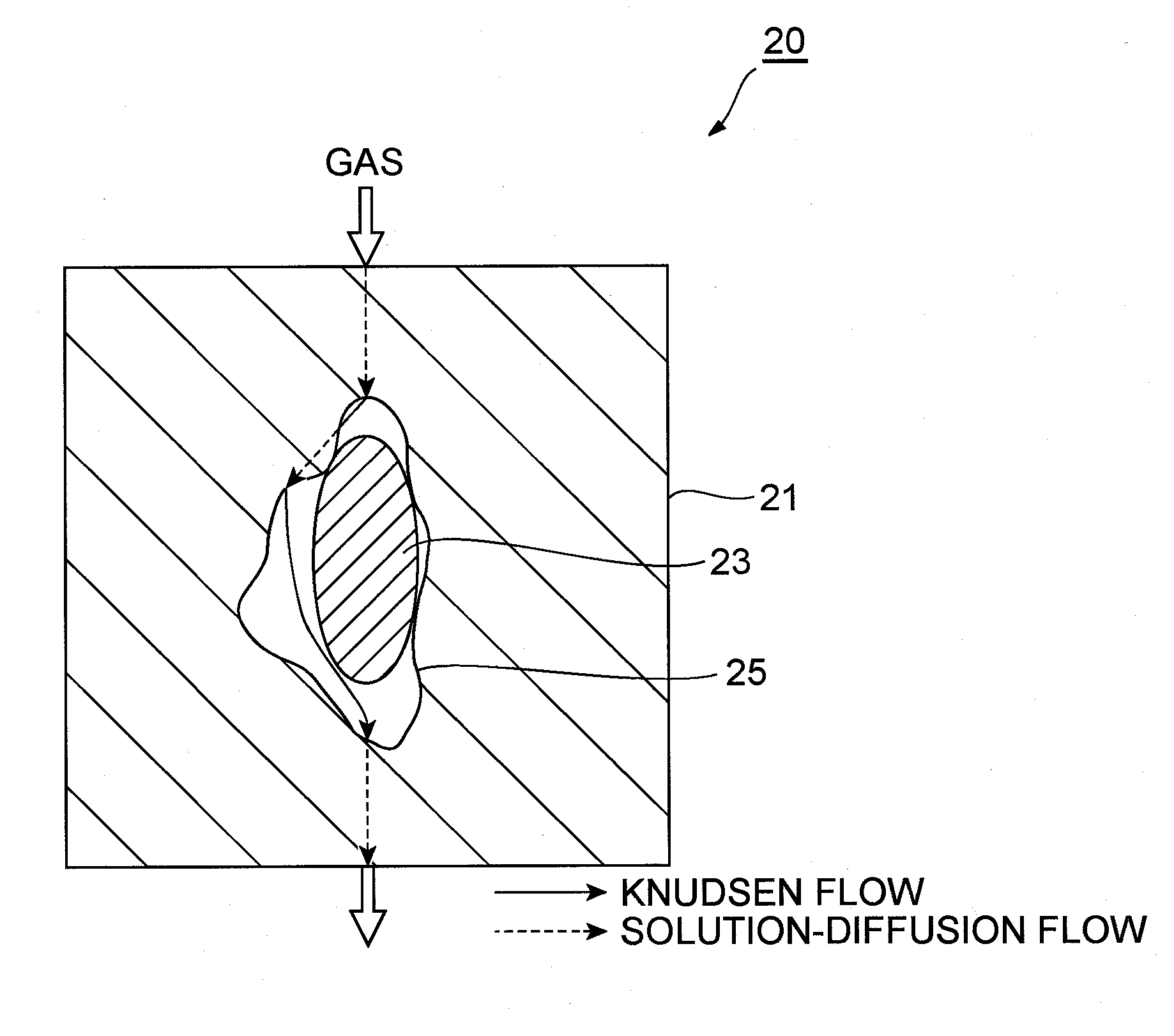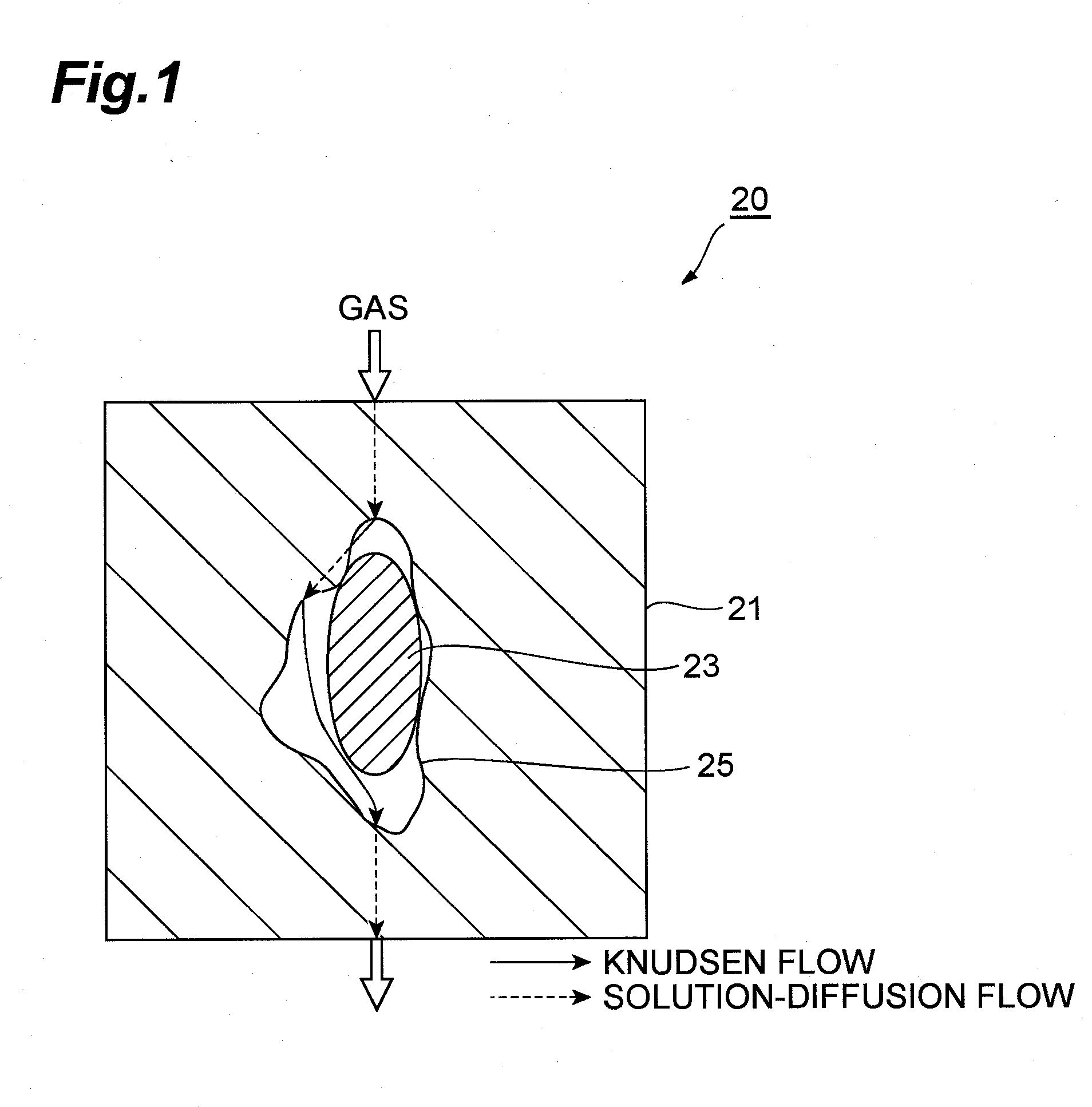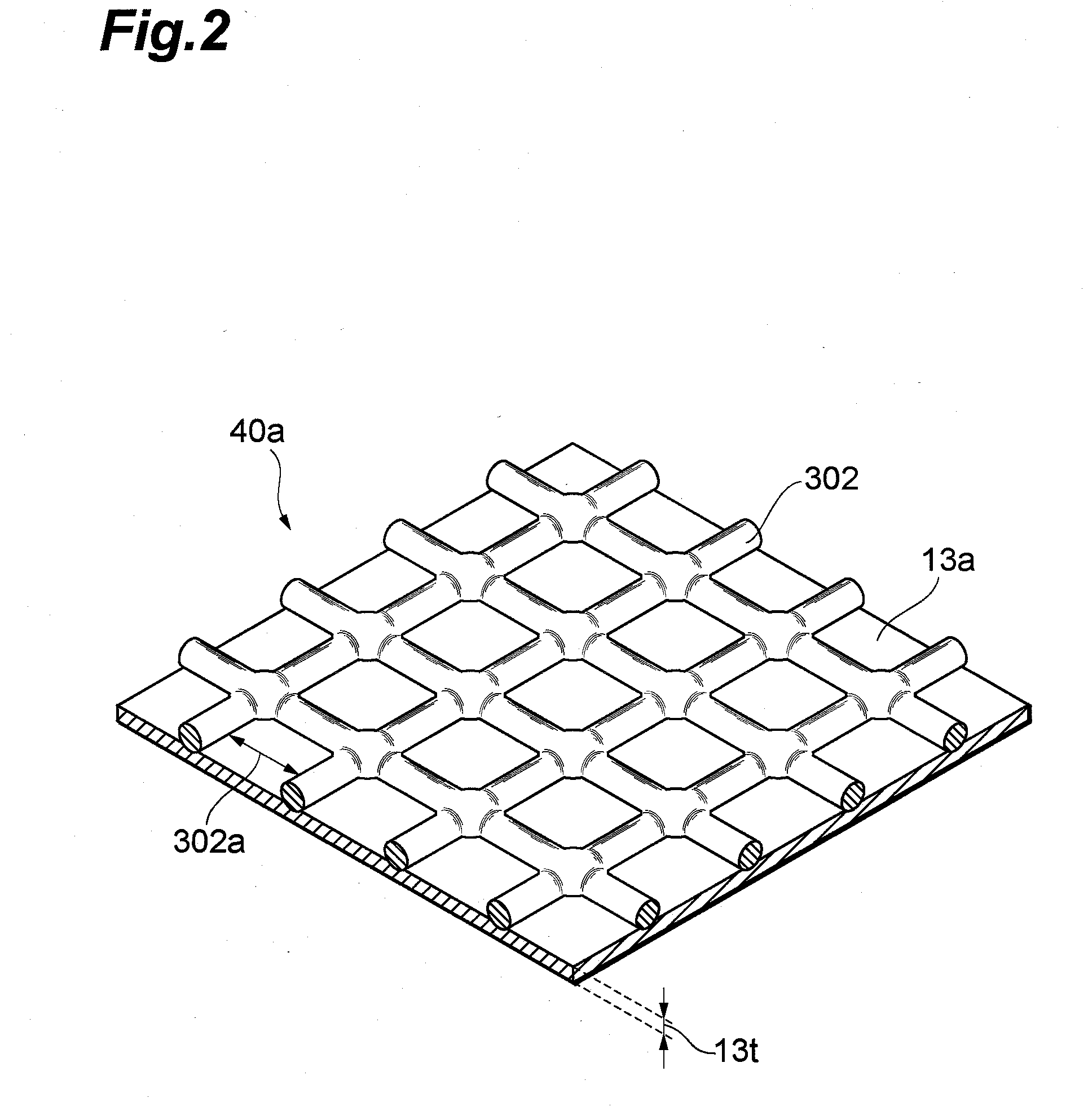Selectively permeable material, method for producing selectively permeable membrane structure, selectively permeable membrane structure, and air conditioning system
a technology of selective permeation and membrane structure, applied in the direction of oxygen/ozone/oxide/hydroxide, separation process, transportation and packaging, etc., can solve the problems of insufficient introduction of external air and inability to achieve air tightness, etc., to achieve sufficient gas permeability, sufficient mechanical strength, and the ability to remove spm
- Summary
- Abstract
- Description
- Claims
- Application Information
AI Technical Summary
Benefits of technology
Problems solved by technology
Method used
Image
Examples
synthetic example 1a
[0314]After 150 g (0.38 mol) of norbornen-2-yltris(trimethylsiloxy)silane and 3000 g of toluene were placed into a 5-L three-necked flask provided with a stirrer, a thermometer, and a condenser tube, the mixture was heated to 40° C. A solution of 0.31 g (0.38 mmol) of bis(tricyclohexylphosphine)benzylideneruthenium(IV) dichloride in 330 g of toluene was added to the mixture, followed by polymerization reaction at 40° C. From the start of the polymerization reaction, the viscosity of the solution gradually increased, and 20 minutes later, 1 g of ethyl vinyl ether was added to terminate the polymerization. The polymer solution was placed into a large volume of methanol to coagulate the precipitate, which was pulverized, washed and separated by filtration. It was dried under reduced pressure at 70° C. for 5 hours to recover white powdered silicone modified cycloolefin polymer. The yield of the resulting polymer was 147 g, and Mn=259,000 and Mw=604,000 on the basis of polystyrene by gel...
synthetic example 2a
[0315]A liquid mixture of 88 g of Pluronic P123 (available from BASF, (ethylene oxide)20(propylene oxide)70(ethylene oxide)20), 2640 g of water, 453.5 ml of hydrochloric acid was stirred with a mechanical stirrer at room temperature. After Pluronic P123 was dissolved, 187.8 g of tetraethoxysilane (available from Kanto Chemical Co., Inc.) was added dropwise, and then the mixture was further stirred for 12 hours. The mixture was heated in an oven held at 35° C. for 20 hours, and further heated in an oven held at 100° C. for 24 hours. The resulting white solid was washed with water, was recovered by filtration, and was dried with a vacuum pump. The product was calcined in a furnace held at 550° C. for 6 hours to yield mesoporous silica (56.3 g).
example 1a
[0316]Silicone modified pullulan polymer (X-22-8400 available from Shin-Etsu Chemical Co., Ltd.) was dissolved in toluene into a solid content of 1 wt %. To the solution (12 g), 0.196 g of spherical silica (X-24-9163A available from Shin-Etsu Chemical Co., Ltd., average diameter: 110 nm) [163 parts by mass for 100 parts by mass of silicone modified pullulan polymer (50 vol % to silicone modified pullulan polymer)] was compounded, and the mixture was agitated with an ultrasonic homogenizer. The resulting solution was placed into a Teflon (Registered Trade Mark by Du Pont, USA) petri dish (diameter: 90 mm), and toluene was removed using a vacuum drier. A membrane having an average thickness of 25 μm was yielded.
PUM
| Property | Measurement | Unit |
|---|---|---|
| temperature | aaaaa | aaaaa |
| particle diameter | aaaaa | aaaaa |
| particle diameter | aaaaa | aaaaa |
Abstract
Description
Claims
Application Information
 Login to View More
Login to View More - R&D
- Intellectual Property
- Life Sciences
- Materials
- Tech Scout
- Unparalleled Data Quality
- Higher Quality Content
- 60% Fewer Hallucinations
Browse by: Latest US Patents, China's latest patents, Technical Efficacy Thesaurus, Application Domain, Technology Topic, Popular Technical Reports.
© 2025 PatSnap. All rights reserved.Legal|Privacy policy|Modern Slavery Act Transparency Statement|Sitemap|About US| Contact US: help@patsnap.com



